Some works of art speak to you on a level that is hard to define. You gaze and are drawn inward. Something in you identifies with what you see there. It’s not outside, it’s in here. It was there before you saw it, and the seeing is just a reminder of its presence.
I felt that way when viewing some of the artwork at the Asian Art Museum in San Francisco. Especially in the faces that follow. The one above is my favorite. I cannot help smiling when I see it. I’ve paired the faces with a few favorite Tao verses and Zen anecdotes that capture a glimpse of what I see in each face.
THE MONK – OH SO DELICIOUS
Once there was a monk fleeing for his life, a tiger at his heels, chasing him over the edge of a cliff where he grabs hold of a branch. He dangles there just out of reach of the tiger’s snapping jaws, while below another tiger is snapping at his feet. No escape. Just then he notices a fat juicy strawberry dangling from a nearby vine. He plucks it loose and pops it into his mouth. “Oh, so delicious!” he sighs.
THE SAGE – WHERE WONDER RISES
“From mystery to further mystery is the entrance to all wonders.” -Tao Te Ching, (Ch. I)
THE SAVANT – RIDING THE WIND
“My eye becomes my ear, my ear becomes my nose, my nose my mouth. My bone and my flesh melt away. I cannot tell by what my body is supported or what my feet walk upon. I am blowing away, east and west, as a dry leaf torn from a tree. I cannot even tell whether the wind is riding on me or I am riding on the wind.” -Lieh Tzu
THE MYSTIC – WHO AM I?
“Once I dreamt I was a butterfly, fluttering here and there. Suddenly I awoke and was surprised to be myself again. Now, how can I tell whether I am a man who dreamt he was a butterfly, or a butterfly who dreams she is a man?” Chuang Tzu
THE MOTHER – OBTAINING THE ONE
There was something complete and nebulous
Which existed before Heaven and Earth,
Silent, invisible,
Unchanging, standing as One
Unceasing, ever-evolving,
Able to be the Mother-of-the-World. – (Ch. XXV)
THE DIVINE - NOT TWO
Knowing the Male,
But staying with the Female,
One becomes the humble Valley of the World. – Tao Te Ching (Ch.XXVIII)
I found this face in the modern art section of the museum. A photograph series by Dayanita Singh featured the transformations of Mona Ahmed, who says that God gave her a man’s body but a woman’s spirit, and that is why they call her Hijra. In India this is considered a third gender and is closely associated with the divine.
I was fascinated by how much this face resembles the ancient one below, transcending time and space as well as gender.
Scattered throughout the exhibition were quotations mounted on the walls. Two follow.
“Mind has no body distinct from his soul, for that called body is a portion of the soul discerned by the five senses.” – William Blake, poet and artist.
“And while I stood there I saw more than I can tell, and I understood more than I saw; for I was seeing in a sacred manner the shapes of things in the spirit, and the shape of all shapes as they must live together like one being.” – Black Elk, Oglala Lakota (Sioux) spiritual leader.
All of these artworks seem to capture the embodied soul and the “shape of all shapes as they must live together like one being.”
I’d love to hear what you thought of these faces and verses.
If you enjoyed this, you might also like A Prodigal Turns Prophet, a poem and essay I wrote inspired, in part, by that first face, as well as my son’s journey and my hope for what he’ll find, eventually, in his travels.




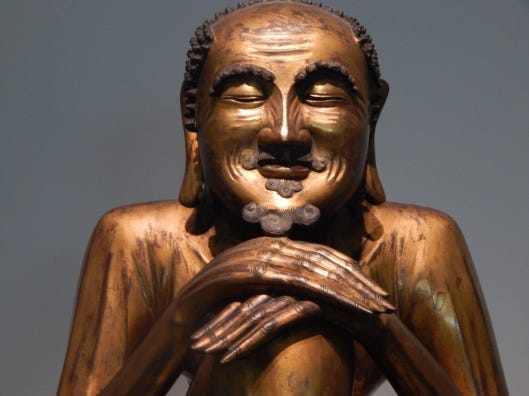

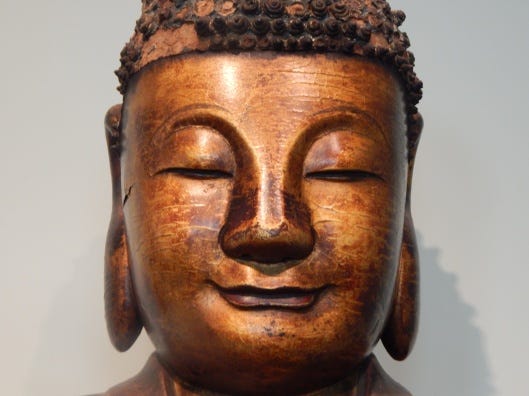
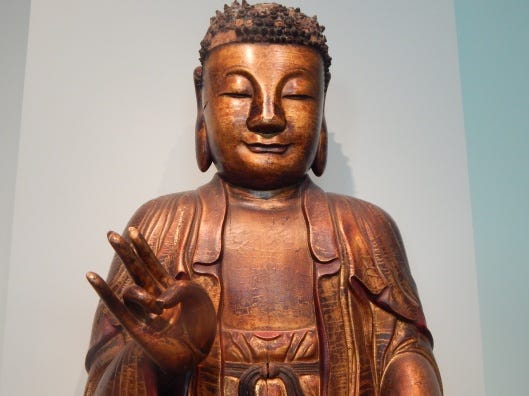
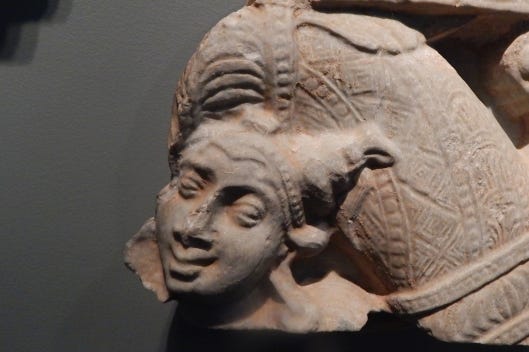

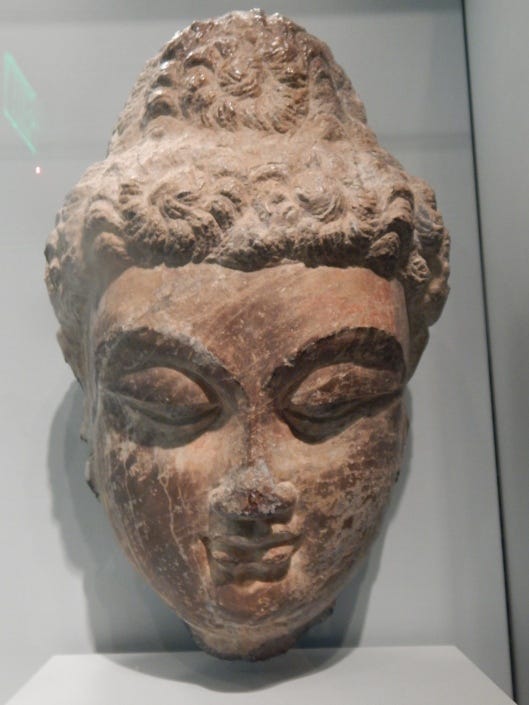
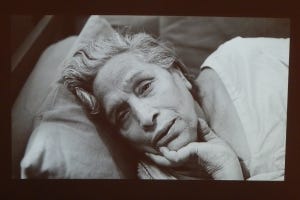
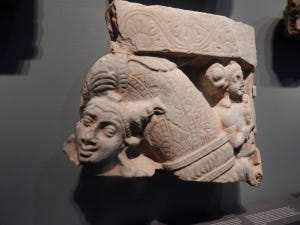
Lovely sculptures and quotes, Deborah. Thank you for sharing them with us.
I grew up in Cleveland, and the Cleveland Museum of Art has a phenomenal Collection. As a teen, I was fascinated by their South Indian collection and spent many hours looking at its beautiful Nataraja, Shiva as the Lord of Dance, which dates from around 1000 AD.
The Māhūs in Polynesian cultures are also the third gender and are respected and honored for their spiritual roles and as teachers. In Native America, they are called "Two Spirits." Painter Kehinde Wiley traveled to Tahiti and did a series of paintings of the Māhūs in an attempt to give them their voice and to reclaim indigenous Tahitian people from the sexually objectified, colonist gaze in Paul Gauguin's paintings. Coincidentally, just today, I shared Wiley's paintings and a fantastic video of him in his studio with my students.
Oh my! I haven't been to the Asian Art Museum in years! Thank you so much for this post. I love the art work and the quotes. Now I am going to look for an opportunity this summer to get down there and explore in person. Beautiful!